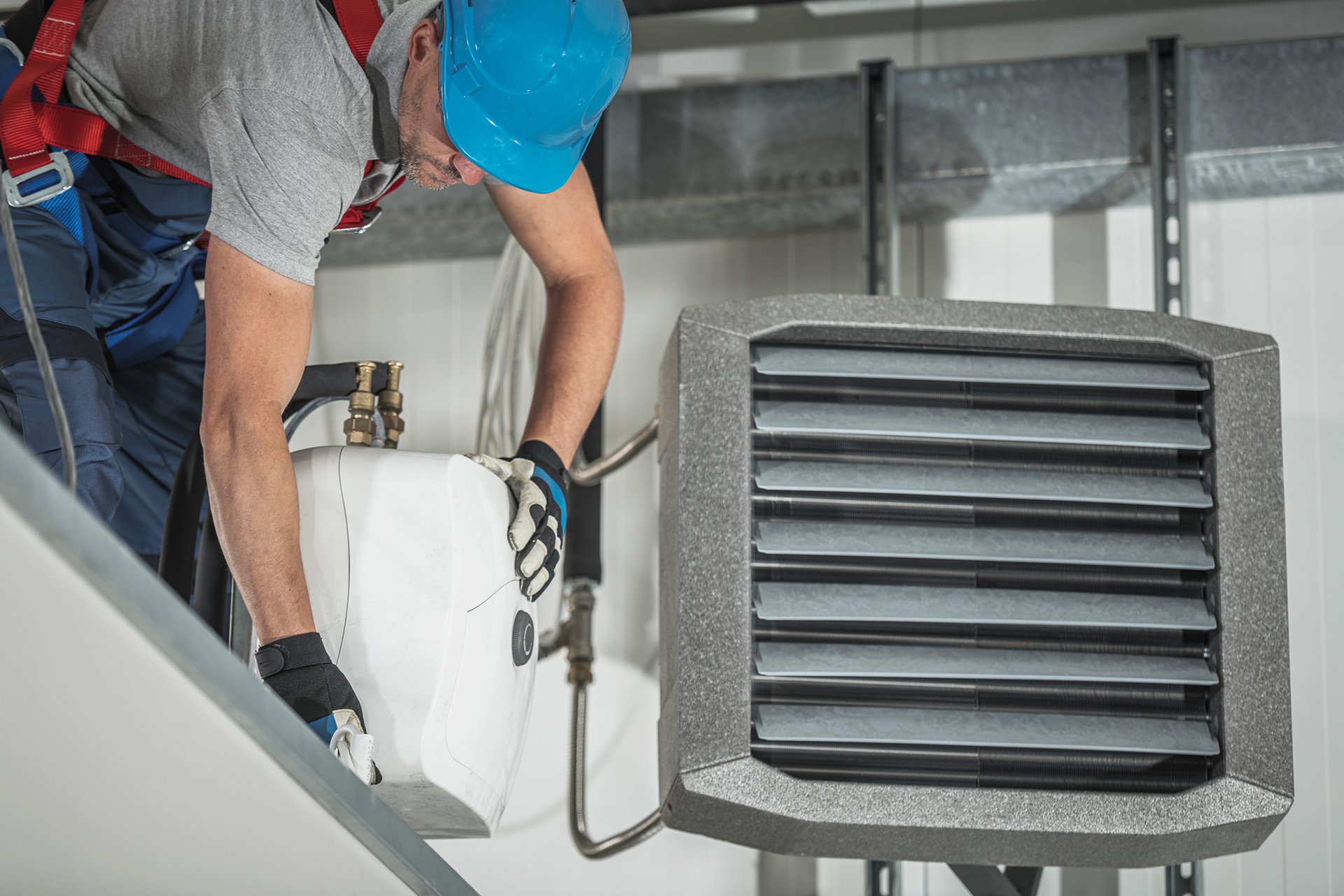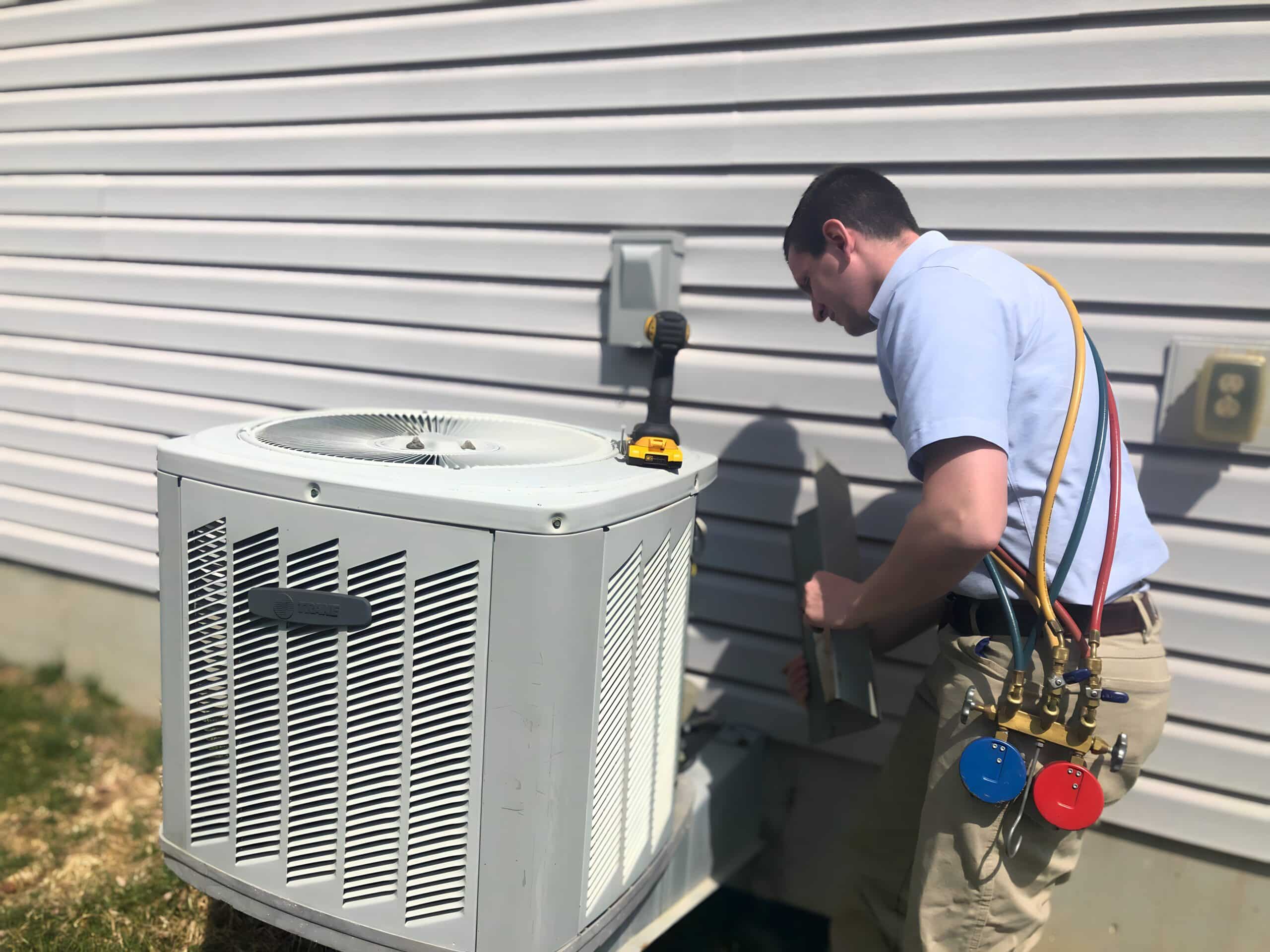Just How a Heatpump and Heating System Interact to Optimize Your Home's Home heating Effectiveness
Comprehending exactly how a heatpump and heater interact is necessary for house owners seeking reliable home heating services. Each system has its staminas, offering a well balanced technique to home comfort. The heatpump masters modest temperatures, while the furnace delivers quick warmth throughout extreme cold. This harmony not just reduces power expenses but additionally improves the life-span of both home appliances. What elements influence this collaboration, and just how can home owners maximize their advantages?
Understanding Heat Pumps: Just How They Work
Lots of people might be unfamiliar with their inner operations, warm pumps play an important role in contemporary heating systems. These tools run by transferring warm from one location to an additional, making use of the principles of thermodynamics. In cooler months, a warmth pump extracts heat from the outdoors air, ground, or water, and transfers it inside your home to heat the home. Alternatively, throughout warmer months, it can reverse the procedure, functioning as an air conditioning unit by removing warmth from inside to the outside.Heat pumps include an evaporator, condenser, expansion, and compressor shutoff. The cooling agent within the system absorbs heat as it vaporizes at low temperature levels and stress. The compressor after that increases the pressure and temperature of the refrigerant, allowing it to release warm as it condenses. This effective procedure can considerably lower energy consumption contrasted to traditional heating techniques, making warm pumps a sustainable choice for environment control in homes.
The Role of Furnaces in Home Home Heating
Heaters play an essential role in home heating by offering a reputable source of heat during the colder months. They run by creating warm with burning or electrical resistance, distributing it throughout the home via air ducts or glowing systems. The effectiveness of a furnace is often measured by its Yearly Gas Usage Efficiency (AFUE) rating, which suggests exactly how efficiently the unit converts fuel right into heat.Furnaces can utilize various power sources, including natural gas, electricity, gas, or oil, permitting house owners to choose one of the most appropriate choice for their needs. Unlike heat pumps, which may struggle in extreme cool, heating systems maintain constant performance, ensuring that interior temperatures stay comfy no matter of outdoor conditions. In addition, modern heaters typically come equipped with sophisticated modern technology, such as smart thermostats and variable-speed blowers, improving their performance and responsiveness. This convenience makes heating systems a critical part in all-encompassing home heating strategies.

Advantages of Utilizing Both Solutions Together
Integrating the strengths of both furnaces and heatpump can bring about a much more effective and efficient home heating solution. Making use of both systems enables homeowners to take advantage of the heat pump's power effectiveness during milder temperatures while relying upon the heater for even more severe cold problems. This double approach can greatly minimize energy costs, as warmth pumps take in much less electrical energy than standard heating approaches when temperatures are moderate.Additionally, using both systems together can improve comfort degrees in the home. Warmth pumps can give consistent, even heating, while heaters can rapidly elevate ambient temperatures when needed. The assimilation of both systems can extend the life expectancy of tools by minimizing wear and tear on each unit, as they share the workload. Inevitably, property owners can delight in a balanced, economical heating solution that changes seamlessly to differing weather, guaranteeing a warm and inviting home throughout the wintertime months.
How Warmth Pumps and Furnaces Complement Each Other
When house owners incorporate heatpump and heaters, they develop a complementary heating unit that makes the most of effectiveness and convenience. Heatpump operate by transferring warm from the outside air or ground, making them extremely effective in modest environments. They succeed throughout milder temperature levels, supplying cost-effective heating. Conversely, furnaces create warmth through burning or electrical resistance, supplying strong, instant heat throughout severe chilly conditions.The mix of these two systems enables dynamic adjustments based upon temperature level fluctuations. During warmer months or milder wintertime days, the heatpump can take the lead, saving energy and reducing expenses. As temperature levels drop, the furnace can perfectly engage, ensuring constant warmth throughout the home. This synergy not just enhances energy use yet additionally improves the life-span of both systems, as each device runs within its suitable performance array. With each other, they produce a balanced setting that adjusts to varying climate needs.
Maximizing Efficiency: Tips for Homeowners
Home owners can improve their heating effectiveness via a number of sensible methods. Establishing a normal upkeep schedule, incorporating clever thermostat modern technology, and executing reliable insulation and sealing remedies are essential actions. These actions not only enhance comfort yet also reduce power expenses.
Regular Upkeep Schedule
To assure maximum home heating efficiency, developing a regular upkeep timetable is vital for any home. Home owners should focus on regular assessments of both warm pumps and heating systems to ascertain peak performance. This includes altering air filters every one to three months, as stopped up filters can greatly minimize efficiency. Furthermore, organizing specialist maintenance a minimum of annually permits specialists to determine and deal with potential issues before they intensify. Home owners must additionally cleanse the heat pump's outdoor unit to stop debris accumulation that can prevent airflow. By sticking to a routine upkeep timetable, home owners not only enhance their heater' effectiveness but also prolong their life expectancy, causing better comfort and lowered power expenses throughout the cooler months.
Smart Thermostat Assimilation
Integrating a smart thermostat right into a home furnace can substantially boost energy efficiency, specifically as it permits accurate control over temperature setups. These gadgets can learn the house owner's schedule and choices, immediately adjusting the temperature level to optimize convenience while lessening energy usage. They can lower home heating during times when the home is unoccupied, lowering unnecessary intake. Lots of smart thermostats also supply real-time energy use data, enabling home owners to make educated choices regarding their heating behaviors. Furthermore, remote accessibility through smartphone apps allows users to change settings from anywhere, ensuring the home is cozy upon return. Overall, wise thermostat assimilation not only enhances convenience however considerably adds to energy financial savings and efficiency.
Insulation and Sealing Solutions
Smart thermostats play a vital role Continued in energy performance, yet their performance can be significantly boosted by correct insulation and sealing options. House owners need to prioritize protecting attic rooms, floorings, and wall surfaces to decrease heat loss. Premium insulation materials, such as spray foam or fiberglass, can considerably boost thermal resistance. In addition, securing voids around air ducts, doors, and windows stops cold air infiltration and warm getaway. Weatherstripping and caulking work techniques for attending to these leakages - ductless mini splits. Regular inspections for air leakages, in addition to the usage of blower door examinations, can assist determine trouble locations. By spending in insulation and sealing, home owners can optimize the efficiency of their heating unit, eventually leading to lowered power intake and lower utility expenses
Common Myths About Warmth Pumps and Furnaces
What misunderstandings surround warmth pumps and heaters? Numerous individuals incorrectly believe that warmth pumps are inefficient in chillier climates. In reality, modern-day warm pumps are designed to operate efficiently also in low temperatures, offering trustworthy heating go throughout winter. An additional usual misconception is that heating systems are always a lot more efficient than warm pumps. However, this relies on the certain power sources and effectiveness rankings of the systems concerned. Some might also assume that using both systems all at once is unnecessary, yet actually, this combination can maximize heating efficiency, particularly during extreme climate condition. Furthermore, individuals frequently assume that heatpump call for constant maintenance, when in reality, they have similar upkeep needs to conventional heater. By unmasking these myths, house owners can make more educated decisions regarding their home heating alternatives, inevitably resulting in enhanced convenience and power effectiveness in their homes.
Maintenance Factors To Consider for Combined Equipments

Frequently Asked Concerns
Can Warmth Pumps Job Efficiently in Exceptionally Cold Climates?
Warm pumps can battle in extremely cold climates as a result of reduced efficiency and warmth extraction restrictions. Nonetheless, advancements in technology have actually led to designs created for far better efficiency in such conditions, improving their stability in rough environments.
For How Long Do Heat Pumps and Furnaces Commonly Last?
Heatpump generally last 15 to twenty years, while heating systems have a life expectancy of 15 to three Full Report decades. Normal maintenance can prolong their durability, making sure reliable procedure and minimizing the requirement for premature substitutes.

What Is the Ordinary Cost of Setting Up Both Equipments?
The average expense of setting up both a heatpump and a furnace normally ranges between $5,000 to $10,000 - furnace replacement. Factors influencing this price include system size, installment complexity, and local labor rates
Are There Tax Obligation Rewards for Making Use Of Energy-Efficient Heating Solutions?
Several property owners ask about tax obligation motivations for energy-efficient heater. Different federal and state programs often use discounts or credit reports, motivating the fostering of lasting modern technologies to reduce energy usage and advertise ecological duty.
How Do I Choose the Right Size Heatpump and Heating System?
Selecting the appropriate dimension warmth pump and furnace involves calculating the home's square footage, thinking about insulation high quality, and reviewing neighborhood environment. Consulting a specialist can assure excellent system performance and energy efficiency based on details demands. heat pump service. Recognizing just how a warmth pump and heating system job together is necessary for house owners seeking efficient home heating options. In chillier months, a warmth pump essences warmth from the outside air, ground, or water, and transfers it indoors to warm up the living space. When home owners incorporate warmth pumps and heating systems, they create a corresponding heating system that makes best use of performance and convenience. Warm pumps operate by moving warm from the outside air or ground, making them highly reliable in modest climates. Heat pumps can have a hard time in very chilly climates due to minimized effectiveness and warm removal limitations